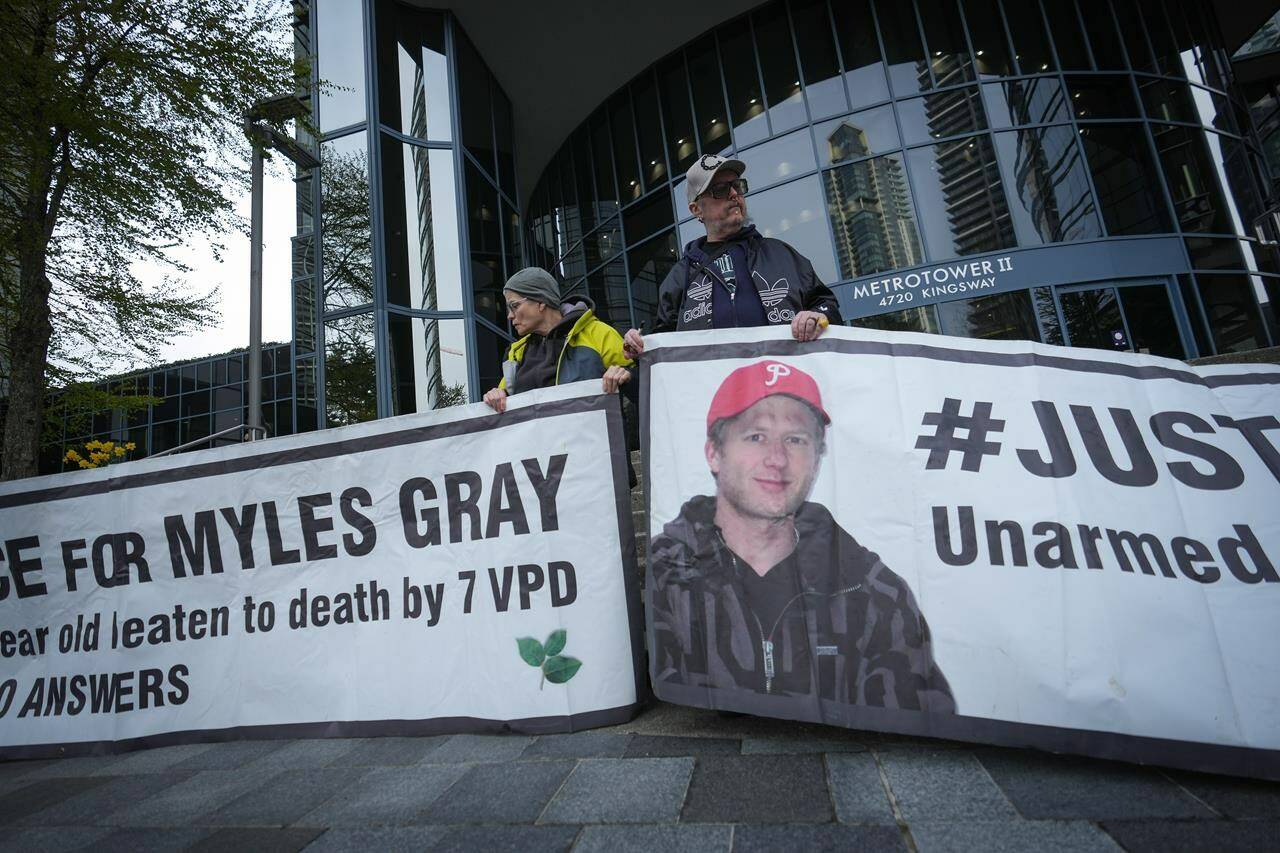A forensic toxicologist says a substance originally reported to be found in Myles Gray’s blood and cited as possibly contributing to his behaviour and death did not, in fact, meet the criteria for detection.
Dr. Aaron Shapiro told a coroner’s inquest into Gray’s death that while the original toxicology report listed mitragynine, or kratom, as present, it was at a level so low that it shouldn’t have been included.
Kratom is an herbal substance extracted from an evergreen tree grown in Southeast Asia. Shapiro says the substance isn’t officially approved for human consumption, but that it’s commonly used by people for it’s coffee-like stimulant effects and mild pain-killing qualities. Shapiro also told the jury kratom is sometimes used by people to self-medicate for bipolar disorder, depression or anxiety.
The jury heard from Gray’s sister earlier in the inquest that her brother was diagnosed with bipolar disorder in high school, and that she believed he was suffering a manic episode when he died following a violent struggle with police on Aug. 13, 2015.
READ ALSO: Myles Gray was likely suffering manic episode when police beat him, sister tells B.C. inquest
Shapiro said the level of kratom listed on Gray’s toxicology report suggests he could have taken a very small amount shortly before his death or a large concentration several days prior that was still in his system. He also could have taken none at all. Regardless, Shapiro said the substance was of no significance.
Weight was given to it, however, in 2020 when the BC Prosecution Service announced it didn’t have enough evidence to prove beyond a reasonable doubt that any of the seven police officers involved in Gray’s death had committed criminal offences.
“[Experts] could not exclude the possibility that Mr. Gray’s death was caused solely by factors unrelated to the use of force by police, specifically, by the ingestion of the Mitragynine…,” the prosecution service said at the time.
An autopsy revealed Gray had been left with numerous broken bones in his face, a brain bleed, a throat fracture, a broken rib, two ruptured testicles and extensive bruising. Experts said they couldn’t determine whether any of those injuries alone caused Gray’s death, however.
The prosecution service said that ambiguity, combined with the fact that there were no independent witnesses, meant it couldn’t confidentally press charges.
The purpose of the coroner’s inquest isn’t to lay blame, but to try and determine the full circumstances of Gray’s death and make recommendations on how to prevent similar ones from occurring in the future. It’s scheduled to last until Friday (April 28).
READ ALSO: Vancouver officers say they continued to beat Myles Gray because he continued to resist
READ ALSO: Officers told not to make handwritten notes after death of Myles Gray, inquest hears
@janeskrypnek
jane.skrypnek@blackpress.ca
Like us on Facebook and follow us on Twitter.
——

